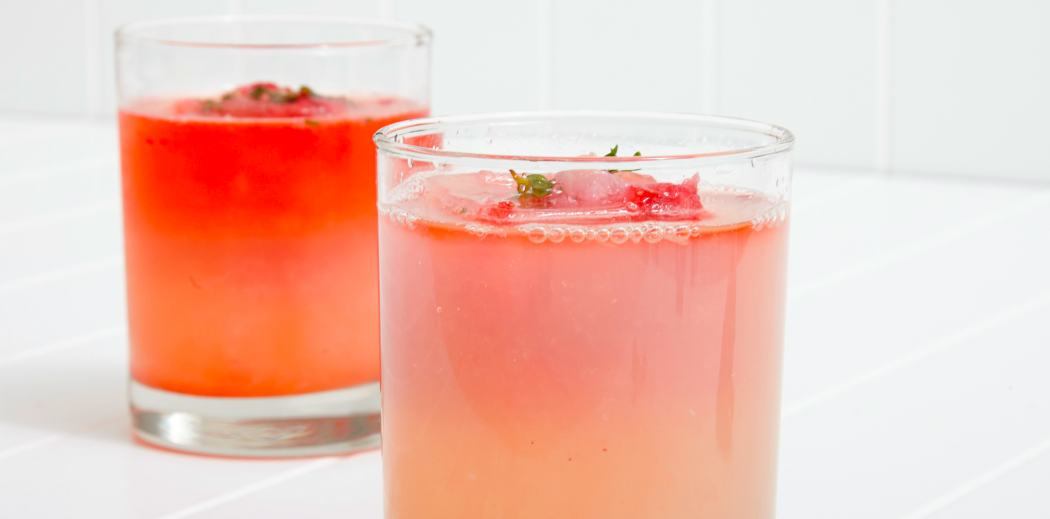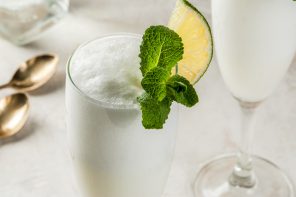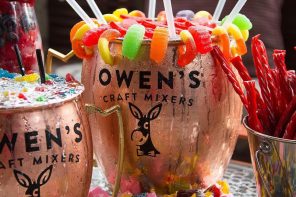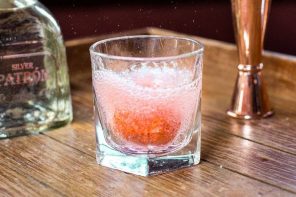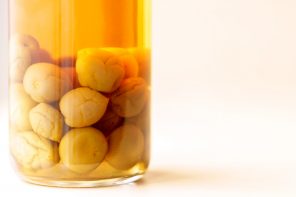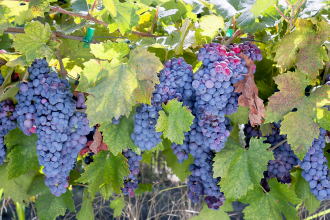I’m always intrigued by how cocktails get their names—and after browsing my fair share of bar menus, there is one term in particular I’ve always pondered: the shrub. What makes a drink a shrub? And how did this word, which I associate with a well-groomed garden, come to be associated with cocktails?
“Shrub” is actually the name of two different alcohol-related refreshments, and vinegar plays a pretty big role in this drink’s history. One kind is a fruit liqueur that was especially popular in 17th century England, made with rum or brandy, sugar, fruit and citrus juice—though vinegar was used instead of citrus to preserve berries in the off-season. This liqueur would then be mixed with flat or sparkling water to create a cocktail. The other type of shrub is a sweetened vinegar-based syrup that can be used to make a drink—this is also called “drinking vinegar,” and is usually infused with fruit juice, herbs and spices.
The history of the word “shrub” comes from the Arabic sharbah, which means “a drink,” though “sherbet” and “syrup also come from this root. Do I sense a theme? Shrubs stretch back to the Babylonians, who mixed date vinegar into water to make it safe to drink, and the Romans, who created posca from combining vinegar and water.
The early English version of a shrub (also called a switchel) was inspired by 15th century medicinal drinks and a Persian cordial called sekanjabin, made with honey and vinegar. Shrubs and switchels were originally marketed as health tonics —sailors drank them to prevent scurvy and to stay in “ardent spirits.”
Since shrubs are essentially a mix of fruits and alcohol, they’re pretty closely related to punch—the main difference is that punch is typically served immediately after mixing, while shrubs have a higher concentration of flavor and sugar and were often stored for later use (kind of like margarita mixer). At Christmastime, people would mix shrubs with raisins, honey, lemon, sherry and rum, and was sold in many British pubs through the 18th century.
The American version of the shrub is definitely inspired by the English version. In colonial America, a typical shrub would involve pouring vinegar over fruit (usually berries) and letting it infuse for several days, then straining out the fruit, sweetening the remaining liquid and reducing it to a syrup. The final product was a sweet and sour syrup that could be mixed with soda water or into boozy cocktails.
Though the shrub declined in popularity once refrigeration came around (who needs vinegar to preserve fruit?), it’s recently made a comeback in the US, Canada and London. The high acidity of the cocktail makes it an excellent aperitif, and some bartenders use it in place of cocktail bitters.
Photo courtesy of Shari’s Berries
Berry Shrub Sparkler
Ingredients
- ¾ cup sugar
- 1 ½ pounds ripe berries
- 3 tbsps distilled white vinegar
- Sparkling wine
Instructions
- BRING sugar and ½ cup water to a boil in a medium saucepan.
- ADD fruit (save some berries for serving).
- REDUCE heat and simmer for 10 minutes.
- REMOVE from heat and let sit for 30 minutes.
- STRAIN syrup into a bowl and stir in the vinegar. Cover and chill.
- DIVIDE shrub syrup among 4 champagne glasses, and top off with sparkling wine and fruit garnish.

